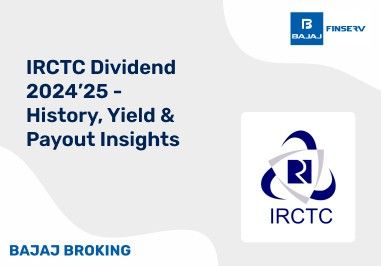BAJAJ BROKING
Ather Energy IPO is Open!
Open a Free Demat Account
Trade Now, Pay Later with up to 4x
Track Market Movers Instantly
Decoding ASM and GSM Frameworks and Stages
Understanding the Additional Surveillance Measure (ASM) and Graded Surveillance Measure (GSM) frameworks is essential for investors and traders alike. These regulatory mechanisms are designed to uphold market integrity, ensure fair trading practices, and protect investors from potential risks. By delving into the stages, inclusion criteria, and exclusions of the ASM and GSM frameworks, you can gain valuable insights to make well-informed investment decisions.
Stages of Long-Term ASM
In the Additional Surveillance Measure (ASM) framework, stocks undergo surveillance in stages upon inclusion. Here's an overview of the four ASM stages:
Stage 1:
Securities are identified based on pre-defined specific ASM criteria.
Margin requirement: 100% from T+3 days.
Stage 2:
Stocks in Stage 1, meeting certain conditions over 5 consecutive trading days.
Conditions include significant price variation and client concentration.
Margin requirement: 100% from T+3 day, with a reduction in the price band to the next lower level.
Stage 3:
Stocks in Stage 2, fulfilling specific conditions over 5 consecutive trading days.
Margin requirement: 100% from T+3 day, with further reduction in price band to next lower level.
Stage 4:
Stocks in Stage 3, meeting defined criteria over 5 consecutive trading days.
Settlement on a gross basis with a 100% margin for all clients and a 5% price band.
Additional Read:
Stages of Short-Term ASM
In the short-term ASM list, stocks are divided into two stages: Stage 1 and Stage 2, each with its margin rates.
Stage 1:
Stocks in this stage are provided with an opportunity to provide clarification.
Information regarding stocks added to the Short-Term ASM is published on the website of the exchange to inform investors.
The applicable margin rate is the higher option of 1.5 times or 40% of the existing margin.
The maximum margin is capped at 100%.
Stage 2:
Stocks in this stage are subject to a higher applicable margin rate.
The margin rate is either 2.5 times the existing margin or 80%, whichever is higher.
The maximum margin is capped at 100%.
Criteria for Inclusion in the ASM Framework
Criteria for shortlisting and reviewing securities under the ASM list are:
Condition 1:
Companies with a High-Low Price Variation over 3 months ≥ 150%; AND Beta of the stock multiplied by Nifty 50 Variation, alongside a top 25 client concentration > 30%.
Condition 2:
Concentration of top 25 clients > 30% and Close-to-Close Price Variation for the last 60 trading days ≥ 100%, plus Beta of the stock multiplied by Nifty 50 variation.
Condition 3:
Close-to-Close Price Variation for the last one year and High-Low Price Variation over 3 months must meet specific criteria, op client concentration > 30%, and a Market Cap exceeding ₹ 500 Cr.
Condition 4:
Daily volume in a month ≥ 10,000 shares and > 500% of the average volume over the last 3 months, with top client concentration > 30%.
Stages of GSM
The Graded Surveillance Measure (GSM) includes four distinct stages:
Stage 1:
Margin requirement: 100%, with a price band of 5% or lower.
Stage 2:
Trade for trade settlement with a 5% or lower price band.
Buyers are required to deposit an Additional Surveillance Deposit (ASD) equivalent to 50% of the trade value.
Stage 3:
Trade for trade settlement with a 5% or lower price band.
Buyers are required to deposit an Additional Surveillance Deposit (ASD) equivalent to 100% of the trade value.
Stage 4:
Trade for trade settlement with a price band of 5% or lower.
Buyers must deposit an ASD equivalent to 100% of the trade value, with no upward movement permitted.
Criteria for Inclusion in the GSM Framework
Criteria for shortlisting and reviewing securities under the GSM list are:
Condition 1:
If a company’s net worth (Share Capital + Reserves & Surplus – debit balance in P&L) is ₹ 10 Cr or less; AND, its Net Fixed Assets (Tangible Assets + Capital Work in Progress) do not exceed ₹ 25 Cr; AND, its PE ratio is greater than twice the PE of the Benchmark Index (Nifty 500), OR is a negative PE.
Condition 2:
Another criterion for getting included in the GSM list is if the company’s market capitalisation is less than ₹ 25 Cr; AND, its PE ratio is greater than twice the PE of the Benchmark Index (Nifty 500); OR is a negative PE.
Specifically, for securities with negative PE, their P/B (Price to Book) value is also considered. The condition is:
The P/B value of the stock is either more than twice the P/B value of the Benchmark Index (Nifty 500); OR, the P/B value is negative.
Exclusions from the ASM and GSM Lists
The following securities will not be considered for shortlisting under ASM and GSM:
Securities where price discovery has not yet occurred.
Securities currently under suspension or already under the Trade for Trade segment..
Securities with available derivative products.
Securities are included in any NSE or BSE index.
Public Sector Enterprises and their listed subsidiaries.
Securities listed through an Initial Public Offering (IPO) in the last 1 year.
Securities that have paid dividends in each of the last three preceding years.
If a security is already under GSM, it will not be included in the ASM list.
Conclusion
The ASM and GSM frameworks are critical regulatory pillars of the stock market. Through their stringent inclusion criteria and structured stages, these surveillance measures serve as guardians of market stability and investor confidence. By staying informed about the details of GSM and ASM, you can navigate the complexities of the stock market with greater clarity and confidence.
Disclaimer: Investments in the securities market are subject to market risk, read all related documents carefully before investing.
This content is for educational purposes only. Securities quoted are exemplary and not recommendatory.
For All Disclaimers Click Here: https://bit.ly/3Tcsfuc
Share this article:
Read More Blogs
Disclaimer :
The information on this website is provided on "AS IS" basis. Bajaj Broking (BFSL) does not warrant the accuracy of the information given herein, either expressly or impliedly, for any particular purpose and expressly disclaims any warranties of merchantability or suitability for any particular purpose. While BFSL strives to ensure accuracy, it does not guarantee the completeness, reliability, or timeliness of the information. Users are advised to independently verify details and stay updated with any changes.
The information provided on this website is for general informational purposes only and is subject to change without prior notice. BFSL shall not be responsible for any consequences arising from reliance on the information provided herein and shall not be held responsible for all or any actions that may subsequently result in any loss, damage and or liability. Interest rates, fees, and charges etc., are revised from time to time, for the latest details please refer to our Pricing page.
Neither the information, nor any opinion contained in this website constitutes a solicitation or offer by BFSL or its affiliates to buy or sell any securities, futures, options or other financial instruments or provide any investment advice or service.
BFSL is acting as distributor for non-broking products/ services such as IPO, Mutual Fund, Insurance, PMS, and NPS. These are not Exchange Traded Products. For more details on risk factors, terms and conditions please read the sales brochure carefully before investing.
Investments in the securities market are subject to market risk, read all related documents carefully before investing. This content is for educational purposes only. Securities quoted are exemplary and not recommendatory.
For more disclaimer, check here : https://www.bajajbroking.in/disclaimer
Our Secure Trading Platforms
Level up your stock market experience: Download the Bajaj Broking App for effortless investing and trading













